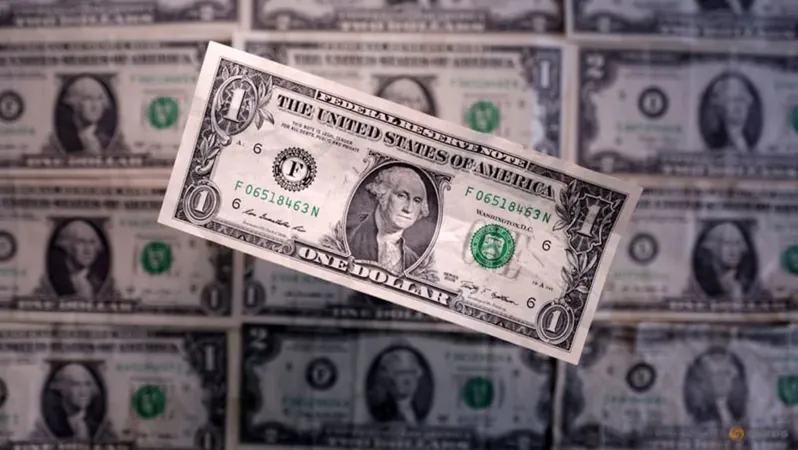
Dollar Dips as Traders Brace for Tariff Announcement: What You Need to Know!
2025-03-28
Author: Arjun
Overview
In a surprising turn of events, the U.S. dollar took a hit on Friday as investors anxiously await a significant tariff announcement from President Donald Trump, scheduled for next week. This uncertainty has left traders scrambling, unsure of how to navigate the currency market.
Market Reactions to Uncertainty
According to Marc Chandler, chief market strategist at Bannockburn Global Forex, one word is echoing through trading floors and conference calls: uncertainty. He emphasized, "We know that reciprocal tariffs are coming on April 2, but the implications of that remain foggy.”
While traders have briefly entertained hopes that the tariffs will be manageable, lingering fears prevail regarding their potential effect on economic growth and inflation. On Wednesday, Trump confirmed a steep 25% tariff on imported automobiles and light trucks, starting April 3, escalating the stakes in an already tense trade environment.
Economic Insights
Mohit Kumar, a senior economist at Jefferies, remarked, "The ongoing uncertainty due to the Trump tariffs is fundamentally shifting market dynamics, as investors eagerly await details on April 2.” Many analysts believe that while the initial announcement could spark negotiations, the final repercussions of the tariffs may not be as dramatic as some are projecting.
Despite the influx of data showing a 0.4% rise in core inflation for February, stronger than anticipated, the dollar weakened further. "It's really old news," Chandler commented, referencing the market's reaction. "Even with firmer core inflation, U.S. bonds have staged a rally, contributing to falling Treasury yields."
Headline inflation also met expectations with a 0.3% increase. Applauding the rebound in U.S. consumer spending for the month, economists are divided on whether this augurs well in the face of tariff impacts.
Global Economic Landscape
Market activity showed the euro gaining traction, rising 0.17% to $1.0819, following disappointing inflation reports in France and Spain. This has led to increased speculation that the European Central Bank may initiate another rate cut.
In Germany, an unexpected rise in the unemployment rate and low business morale in Italy have added complexity to the European economic landscape. Meanwhile, the dollar slipped 0.57% against the Japanese yen, aligning with the downturn in U.S. Treasury yields.
Interestingly, Japan is witnessing its own inflation challenges, with core inflation in Tokyo surpassing the central bank’s targets, adding another layer of complexity for policymakers.
British Pound and Cryptocurrencies
Across the pond, the British pound made headlines as it strengthened 0.08% to $1.2955, buoyed by surprising retail spending data which defied predictions. Official reports indicated that British consumers were more willing to spend than analysts had forecasted, a ray of optimism amidst ongoing economic uncertainties.
In the world of cryptocurrencies, Bitcoin experienced a notable downturn, dropping 3.25% to $84,469.42, as market volatility influenced investor sentiment.
Looking Ahead
As the April 2 announcement looms closer, all eyes are on Trump's tariff decisions and their ramifications across global markets. Will the dollar rebound, or is a prolonged period of instability ahead? Stay tuned for the latest updates!



 Brasil (PT)
Brasil (PT)
 Canada (EN)
Canada (EN)
 Chile (ES)
Chile (ES)
 Česko (CS)
Česko (CS)
 대한민국 (KO)
대한민국 (KO)
 España (ES)
España (ES)
 France (FR)
France (FR)
 Hong Kong (EN)
Hong Kong (EN)
 Italia (IT)
Italia (IT)
 日本 (JA)
日本 (JA)
 Magyarország (HU)
Magyarország (HU)
 Norge (NO)
Norge (NO)
 Polska (PL)
Polska (PL)
 Schweiz (DE)
Schweiz (DE)
 Singapore (EN)
Singapore (EN)
 Sverige (SV)
Sverige (SV)
 Suomi (FI)
Suomi (FI)
 Türkiye (TR)
Türkiye (TR)
 الإمارات العربية المتحدة (AR)
الإمارات العربية المتحدة (AR)